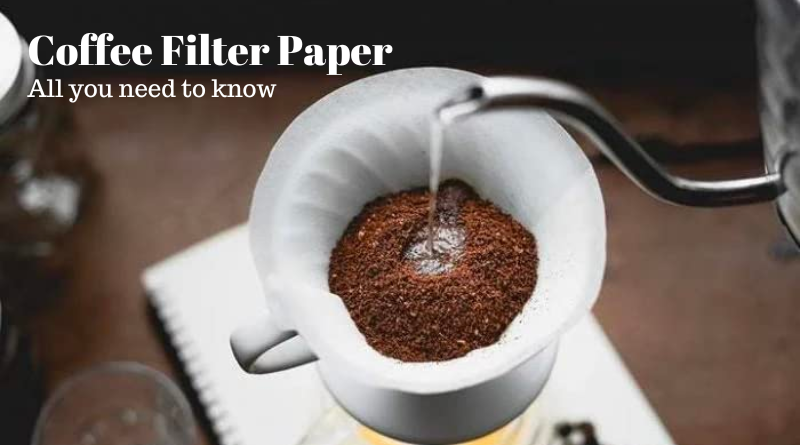Choosing the Right Coffee Filter Paper for a Perfect Brew
In the world of coffee brewing, coffee filters play a vital role in ensuring a smooth and flavorful cup of coffee. These filters serve as a barrier, separating the coffee grounds from the liquid, and effectively filtering out unwanted sediments, oils, and particles. Without a coffee filter, the brewed coffee may end up containing undesirable elements that can significantly impact its taste and texture.
One popular choice among coffee enthusiasts is coffee filter paper. Designed specifically for coffee brewing, this type of filter paper has gained widespread popularity due to its excellent filtration capabilities and ability to preserve the desired flavors and aromas of the coffee. Made from high-quality paper materials, coffee filter paper offers convenience, consistency, and ease of use for both home and commercial coffee brewing setups. It has become a go-to option for many coffee lovers who seek a clean and balanced cup of coffee with every brew.
In the upcoming sections, we will explore the various aspects of coffee filter paper, including its composition, benefits, selection tips, brewing techniques, and more. Whether you are a coffee aficionado or a casual coffee drinker, understanding the significance of coffee filter paper can greatly enhance your overall coffee brewing experience.
Types of Coffee Filters

When it comes to coffee filters, there are several options available to choose from. Each type has its own unique characteristics and suitability for specific brewing methods. Let’s take a brief look at the different types of coffee filters, with a particular focus on coffee filter paper as a preferred choice among coffee enthusiasts.
Coffee filter paper

Coffee filter paper is a widely favored option for its efficient filtration capabilities and ability to deliver a clean cup of coffee. Made from high-quality paper materials, this type of filter offers excellent filtration while allowing the desired flavors and oils to pass through. Coffee filter paper is available in various shapes and sizes to accommodate different brewing equipment, making it a versatile choice for both home and commercial setups.
Metal filters

Metal filters are typically made of stainless steel or fine mesh materials. They are reusable and offer a more eco-friendly alternative to paper filters. Metal filters allow more oils and sediments to pass through, resulting in a fuller-bodied cup of coffee with a distinct flavor profile. However, they may require more thorough cleaning compared to paper filters.
Cloth filters

Cloth filters are often made of cotton or similar fabric materials. They provide a unique brewing experience by allowing the coffee oils to seep through while retaining some of the coffee solids. Cloth filters can impart a rich and full-bodied taste to the coffee, but they require proper cleaning and maintenance to prevent any residual flavors.
Nylon filters

Nylon filters are durable and reusable, making them a practical choice for coffee brewing. They offer moderate filtration and can be easily cleaned between uses. However, nylon filters may not provide the same level of clarity in the cup as paper filters.
While each type of coffee filter has its merits, coffee filter paper stands out as a preferred option due to its consistent performance, convenience, and ability to deliver a clean and balanced cup of coffee. In the subsequent sections, we will delve deeper into the specifics of coffee filter paper, exploring its composition, benefits, and how to choose the right one for your brewing needs.
What is Coffee Filter Paper?
Coffee filter paper refers to a specialized type of paper designed for the purpose of filtering coffee during the brewing process. It is typically made from high-quality cellulose fibers derived from plants such as wood pulp. The paper is porous, allowing the passage of liquid while effectively capturing coffee grounds, sediments, and undesirable oils.
Coffee filter paper is often thin and lightweight, yet strong enough to withstand the brewing process without tearing or disintegrating. It is available in various sizes and shapes to accommodate different coffee makers and brewing methods, ensuring a proper fit and optimal filtration.
Importance of using high-quality filter paper
Using high-quality filter paper is essential for achieving a superior coffee brewing experience. Here’s why:
Enhanced filtration
High-quality filter paper offers superior filtration capabilities, effectively removing coffee grounds, sediments, and unwanted particles. It ensures that only the liquid passes through, resulting in a clean and clear cup of coffee.
Removal of undesirable flavors and oils
Filter paper plays a crucial role in removing unwanted oils and bitter compounds from the coffee. It helps eliminate any residual flavors that can negatively impact the taste and aroma of the final brew, resulting in a smoother and more enjoyable cup.
Retention of aromatic compounds
While filtering out undesirable flavors, high-quality filter paper still allows the desirable aromatic compounds to pass through. This preserves the delicate and nuanced flavors of the coffee, ensuring a well-balanced and flavorful cup.
Consistency and reliability
Using reliable and well-made filter paper ensures consistency in the brewing process. It provides a predictable flow rate, helping to maintain control over the extraction process and achieve consistent results with each brew.
Ease of use and convenience
Coffee filter paper is designed to be user-friendly and hassle-free. It is simple to use, requiring minimal preparation and cleanup compared to other types of filters. This convenience makes it a popular choice for both home and commercial coffee brewing.
Benefits of Coffee Filter Paper
Superior filtration capabilities for a cleaner cup of coffee
One of the primary benefits of using coffee filter paper is its superior filtration capabilities. The paper’s porous texture effectively captures coffee grounds, sediments, and fine particles, preventing them from ending up in the final cup. This results in a cleaner brew with a smoother texture and improved clarity. By removing these unwanted elements, coffee filter paper ensures a more enjoyable and visually appealing coffee drinking experience.
Removal of unwanted oils and sediments from the coffee
Coffee beans contain natural oils that contribute to the overall flavor profile of the brew. However, excessive amounts of oils can lead to a heavy and unpleasant taste. Coffee filter paper plays a crucial role in removing these unwanted oils from the coffee, resulting in a cleaner and lighter cup. Additionally, it effectively filters out sediments and fine particles, eliminating any grittiness and ensuring a smooth and consistent texture.
Retention of aromatic compounds while filtering out undesirable flavors
While filtering out undesirable flavors, coffee filter paper allows the desirable aromatic compounds to pass through. These aromatic compounds contribute to the nuanced flavors and enticing aroma of the coffee. By retaining these compounds, coffee filter paper ensures that the brewed coffee has a well-balanced and aromatic profile. Simultaneously, it filters out undesirable flavors, such as bitterness or astringency, resulting in a more enjoyable and flavorful cup of coffee.
How to Choose the Right Coffee Filter Paper
Consideration of filter size and shape based on brewing equipment
When choosing coffee filter paper, it’s important to consider the size and shape that best fits your specific brewing equipment. Different coffee makers, such as pour-over cones, automatic drip machines, or French presses, require different filter sizes and shapes. Ensure that the filter paper you choose matches the dimensions and design of your brewing equipment to achieve a proper fit and optimal filtration. This will help prevent any bypass or overflow issues during the brewing process.
Determining the appropriate thickness of filter paper
The thickness of coffee filter paper can impact the flow rate and extraction of coffee during the brewing process. Thicker paper filters tend to result in a slower flow rate, allowing for a more prolonged extraction and potentially yielding a fuller-bodied cup. On the other hand, thinner filter paper allows for a faster flow rate and may produce a lighter and cleaner cup. Consider your personal preference for coffee strength and body when selecting the appropriate thickness of filter paper.
Factors to consider when selecting the filter paper material
The material of the filter paper can also influence the coffee brewing process and the resulting taste. Some common filter paper materials include bleached and unbleached paper, as well as natural and synthetic fibers. Here are a few factors to consider when selecting the filter paper material:
Bleached vs. unbleached
Bleached filter paper undergoes a bleaching process to achieve a bright white appearance. Unbleached filter paper, on the other hand, retains its natural brown color. While both types can effectively filter coffee, some people prefer unbleached paper due to concerns about potential chemical residues from the bleaching process.
Natural vs. synthetic fibers
Natural fiber filter papers are typically made from plant-derived materials such as wood pulp, offering a more eco-friendly option. Synthetic fiber filter papers, often made from materials like polypropylene, provide durability and resistance to tearing. Consider your personal preferences, sustainability concerns, and brewing goals when choosing between natural and synthetic fibers.
Oxygen bleached vs. chlorine bleached
If you opt for bleached filter paper, consider choosing oxygen-bleached paper over chlorine-bleached paper. Oxygen bleaching is a more environmentally friendly process that doesn’t introduce harmful chlorine compounds into the environment.
Brewing Tips for Using Coffee Filter Paper

Proper preparation and folding techniques for optimal brewing: To achieve the best results when using coffee filter paper, it’s important to properly prepare and fold the filter. Follow these tips for optimal brewing:
Rinse the filter
Before adding coffee grounds, rinse the filter with hot water. This helps remove any paper residue and preheats the brewing equipment, ensuring a cleaner taste and temperature stability.
Fold the filter properly
Take care when folding the filter to ensure a snug fit and even extraction. For cone-shaped filters, fold along the seams and make sure the bottom is flat. This allows for an even distribution of water over the coffee bed.
Pre-wet the filter
After folding, pour a small amount of hot water over the filter to pre-wet it. This helps to eliminate any papery taste and promotes better extraction by saturating the filter and reducing water bypass.
Step-by-step guide to using coffee filter paper with different brewing methods: Different brewing methods require specific techniques when using coffee filter paper. Here’s a general step-by-step guide for some popular brewing methods:
Pour-over brewing
Place the filter in a pour-over cone or dripper and set it on top of a mug or carafe. Add the desired amount of coffee grounds into the filter, ensuring an even distribution. Slowly pour hot water in a circular motion, starting from the center and moving outward. Allow the water to pass through the filter and into the mug or carafe.
Automatic drip brewing
Insert the filter into the designated filter basket of the drip coffee maker. Add the appropriate amount of coffee grounds and close the brewing compartment. Fill the water reservoir with the desired amount of water. Start the brewing cycle and let the machine handle the rest.
French press brewing
Although French press brewing doesn’t typically involve paper filters, some people prefer to use a fine-mesh filter or a coffee sock in conjunction with the French press plunger. Place the filter inside the press, add the coffee grounds, and pour hot water over them. Let the coffee steep for the desired time, then slowly press down the plunger, separating the brewed coffee from the grounds.
Common Mistakes to Avoid with Coffee Filter Paper
Overloading the filter with excessive coffee grounds
Using too many coffee grounds in relation to the filter size can lead to an uneven extraction and potential overflow. Follow the recommended coffee-to-water ratio for your specific brewing method to ensure proper extraction and prevent overflow issues.
Using low-quality or poorly fitting filter papers
Using low-quality filter papers or those that do not fit properly can result in inconsistent extraction and potential grounds escaping into the brew. Invest in high-quality filter papers that are specifically designed for your brewing equipment to ensure a reliable and effective filtration process.
Final Words
coffee filter paper plays a crucial role in achieving a delicious and satisfying cup of coffee. Its superior filtration capabilities ensure a cleaner brew by removing unwanted oils, sediments, and undesirable flavors. With proper selection and preparation, coffee filter paper enhances the extraction process while retaining aromatic compounds for a well-balanced and flavorful experience. By following brewing tips, avoiding common mistakes, and maintaining the filter paper’s cleanliness, you can maximize its lifespan and performance. Additionally, coffee filter paper offers versatile uses beyond brewing, and its environmentally friendly disposal options make it a sustainable choice. Embrace the potential of coffee filter paper and elevate your coffee brewing journey.




